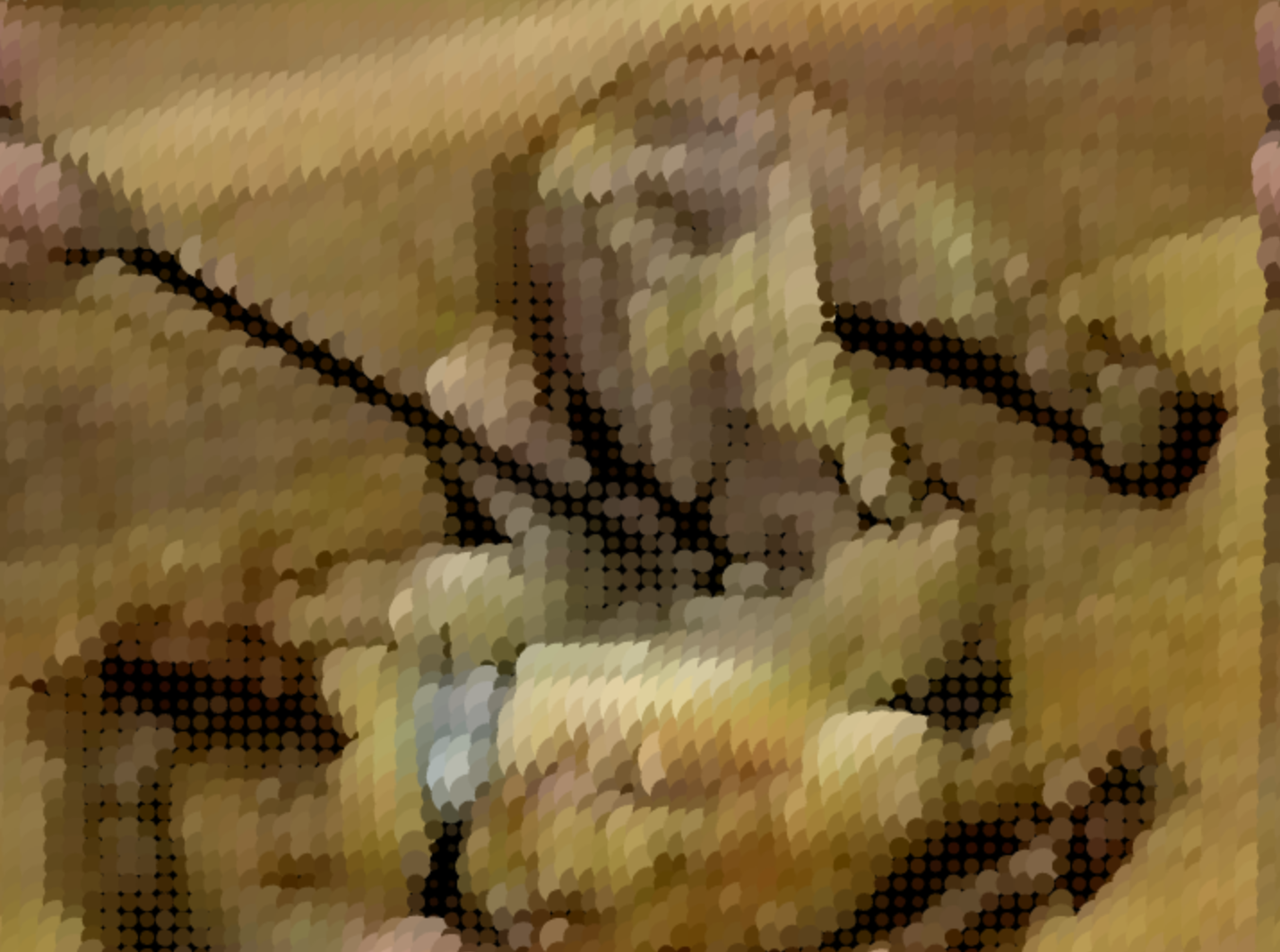The Chicken of Tomorrow
The Chicken of Tomorrow is a projection mapping work devoted to chicken. Combining archive video material and the latest research, it tells the brief and bizarre story of a bird turned into a commodity.
Produced by: Annina Huhtala
Introduction
There’s something odd going on on my home street in South London. The walkways are often littered with chicken bones. Stepping on a thoroughly licked drumstick one October morning was an unexpected ignition for this work. I was on the lookout for a good story and this time the idea came crushed under my sole.
After the initial idea was locked, the second, crucial step of this process was obsession. I saturated myself with everything chicken-related. Soon it became evident that I was diving into a real-life sci-fi story. I then squeezed all the data into a short story, no more than 100 words. The text worked as a skeletor and a foundation for the visualizations.
Concept and background research
The story of the chicken as we know them today started 70 years ago. In 1948, the Great Atlantic & Pacific Tea Company and the US Department of Agriculture launched a competition called The Chicken of Tomorrow. The competition had a simple goal, make chickens meatier. The program exceeded all expectations. Chickens are now five times bigger than in 1948 - so big that when they turn five weeks, their legs can’t carry their weight anymore.
The magnitude is almost incomprehensible. We consume 2087 chickens per second, a pace that is only increasing. The lifespan of a chicken has dropped from its ancestors’ 3–11 years to 5–7 weeks. As a consequence, the amount of leftovers and bones is soaring. With 65 billion chicken eaten every year, researchers now predict that chicken bones might become the greatest fossil of our present time.
To understand the impact that chicken farming has, it can be compared to plastic waste or nuclear tests. It is leaving an irreversible mark of the human impact on the Earth. And that’s not all, in just half a century, we have managed to change the actual biology of chicken. Thanks to a competition held in 1948.
Technical
In this work I manipulated archive video material from the 1948 Chicken of Tomorrow competition. The farm-life on the footage looks exactly like we are taught to imagine it. Fluffy chicks play in the hay, and free-running hens are handled by men dressed in formal trousers and women in their flowery summer dresses. A reference is also made to an iconic tv-chef Julia Child who was the first to teach American households how to roast a chicken. In all the archive material, chickens are still referred to as birds. In a third, recent footage chickens are handled in an ultra-modern production facility. Humans are not present anymore.
According to studies, we now struggle to consider chickens as animals. Even the scientific literature on chickens is sparse and mainly focused on their management as biomass. That is, above all convenient. In a recent article, biopsychologist Lori Marino reminds us that chickens are capable of complex cognitive behaviour, they anticipate future events and perform simple forms of transitive inference, “a capability that humans develop at approximately the age of seven”.
With this work I wanted to test the limits of journalistic storytelling in a new format, with a physical installation and generative code. It was exciting to explore the endless possibilities. Also, I find it a little ironic that we can study our blind faith in technology and advancement of science with same tools, latest technology and scientific articles.
Future development
As much as I believe in true stories and facts, they need to brought into life. Our relationship with chicken is so completely and totally sanitized that as future development, I would love to add an interactive element to this work. Why not something for all senses, smell and touch included.
Evaluation
Overall, I am happy with this work. My main goal was to tell a story, and I accomplished that. If I would do this again, I would probably loosen up the control a bit. This work resembles a chicken factory in the sense that everything is very precisely timed. I would give more time and space for the generative code to work its magic and create surprises.
References
Bennett, C., Thomas, R., Williams, M., Zalasiewicz, J., Edgeworth, M., Miller, H., Marume, U. (2018). The broiler chicken as a signal of a human reconfigured biosphere. Royal Society Open Science, 5(12), 180325. https://royalsocietypublishing.org/doi/10.1098/rsos.180325
Marino, L. (2017). Thinking chickens: A review of cognition, emotion, and behavior in the domestic chicken. Animal Cognition, 20(2), 127-147. https://link.springer.com/article/10.1007/s10071-016-1064-4
The Chicken of Tomorrow (1948): How scientific agriculture changes the life and taste of the chicken. Great Atlantic & Pacific Tea Company / The Texas Company. https://archive.org/details/Chickeno1948
Modern Ultra Chicken Meat Processing Factory. Promotional material for meat processing equipment: https://www.youtube.com/watch?v=isdKEo_qMqY
Code:
Typewriter effect modified from the code created by Deborah Schmidt. https://github.com/openframeworks/openFrameworks/blob/patch-release/examples/input_output/loadTextFileExample/src/ofApp.cpp
Sound:
Hen clucking by Angel Perez Grandi. https://freesound.org/people/Angel_Perez_Grandi/sounds/49805/




































































